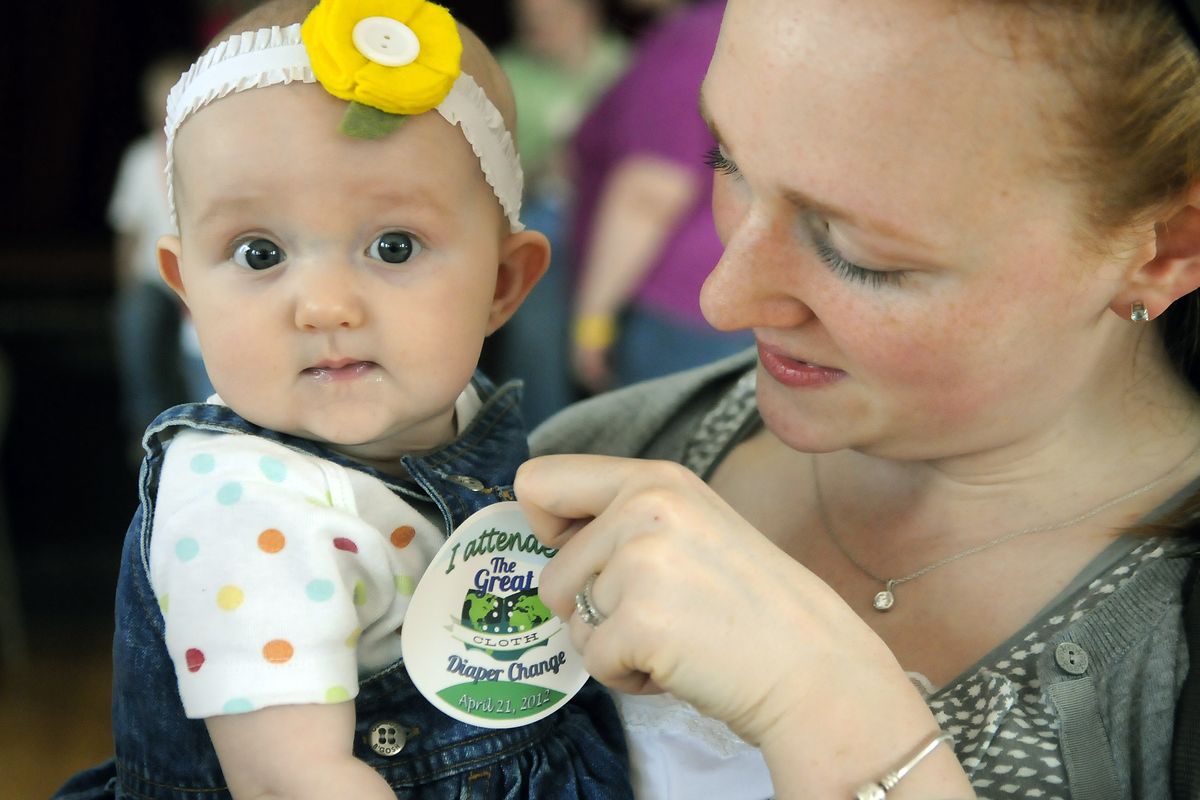Diaper-changing, trail-clearing help mark Earth Day celebrations

At 9:30 Saturday morning, it was time for the babies to be changed – all 34 of them.
In hopes of raising awareness about the environmental perks of cloth diapers, the Great Cloth Diaper Change got under way at the Woman’s Club of Spokane, part of a worldwide effort to break the Guinness World Record for the most cloth diapers changed at the same time.
“(Cloth diapers) reduce the amount of waste you produce,” said Christina Weedon, who runs the Spokane Cloth Diapering Facebook page. “They’re friendlier to the baby’s tush, they’re cute, they’re cost-effective, they’re fun, and they’re constantly evolving and getting better. There aren’t any more huge diaper pins to poke your baby.”
Although Earth Day 2012 is officially today, the mass diaper change was one of a raft of events that celebrated the day on a sun-splashed Saturday in Spokane.
Kay Church, the host of the event, said parents who prefer disposable diapers aren’t considering the environment when buying the essential baby product.
“The law is to put the poop from the disposables in the toilet anyway,” she said. “Everybody just throws them away without doing that, and they go to the landfill, which isn’t good for the Earth. It doesn’t make sense.”
Church, who had her 18-month-old son, Gabriel, in her arms for most of the event, believes the group will break the record. They will know for certain sometime next week.
At the Northwest Museum of Arts and Culture on West First Avenue in Browne’s Addition, organizers were focused on another aspect of human digestion Saturday, teaching members of the community how to grow their own food.
“What’s exciting is it’s an opportunity to connect science to how people used to live – and some still do: living with what the land gives us,” said Forrest Rodgers, director of the MAC. “We have to stress this to young people, because it’s going to be their world to conserve very soon.”
The museum taught visitors proper gardening practices while the families helped plant “Victor’s Garden,” where many food items that are used in the museum’s cafe are grown – including several culinary herbs, lettuce, onions, spinach, carrots and cucumbers.
“Having what we know as the American lawn started as a sign of luxury for the French aristocracy in the 18th century,” said Lynn Bahrych, director of the Dig It exhibit at the MAC. “They wanted to prove to everyone that they didn’t need to grow their own food and farm. We want to change that: We want you to eat your yard.”
At the Big Rock Recreation Area in Dishman Hills, about 25 volunteers cleared brush from the trails and generally cleaned up the area, while cleanups were also planned for the Centennial Trail and in Cheney.
At the center of it all, the Earth Day Spokane street fair on Main Street between Browne and Division streets featured music, booths and free tomato starts.
Back at the MAC, Suzanne Alvarez was one of many people hoping to learn more about backyard gardening.
Alvarez home-schools her four daughters and was excited about the new lessons she could now teach them.
“We’re going to the store right after we’re done here to start collecting supplies,” she said. “The best part is I don’t have to get my kitchen really dirty, which is the usual problem with science projects.”